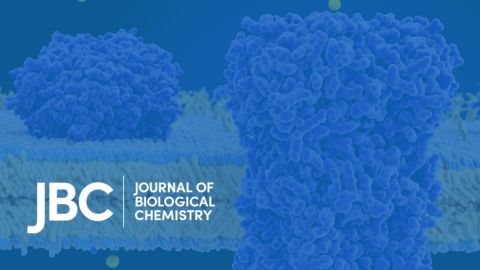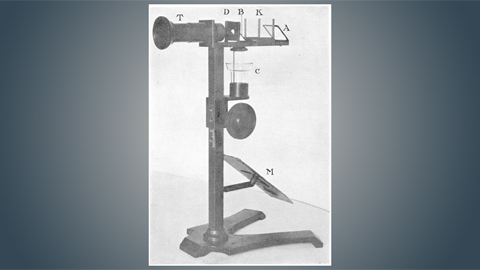
The bee microbiome can fight back against fungi that cause Colony Collapse Disorder
Fungal diseases get less attention than they deserve.
They are a major cause of food insecurity and economic loss for food producers. Huge proportions of staple plant crops like wheat and potato are lost every year to disease. Likewise, fungal infections threaten honey production in honeybees by killing huge numbers of the animal, and likely contributes to Colony Collapse Disorder (CCD).
Human activity often determines how far and how fast a fungus will spread, because we transport crops and livestock long distances and cram huge populations of a single species together. The plight of the honeybee is a perfect example. In the first episode of the Netflix series “Rotten,” honeybees throughout the US are transported en masse every spring to California, where they pollinate the enormous almond crop. Bringing so many bees together makes the spread of pathogens and disease unavoidable, and beekeepers around the country have lost hives as a result.

Fungi can infect hives that are already stressed, and cause disease in larvae and pupae. It is possible to treat hives with fungicidal chemicals, but pathogens are becoming resistant. In addition, chemical fungicides can often kill helpful microbes because they are rather indiscriminate, and may even harm bees directly. Pesticides are often cited as a contributor to CCD, although there is much disagreement and controversy on this point. Regardless, we desperately need alternatives to chemical pesticides.
In work recently posted to the pre-print site bioRxiv, scientists show how Bombella apis, a bacterium that commonly resides in bee hives, can actively help to protect bees against fungal infection. Rather than spray any synthetic chemicals into a hive, these bacteria appear to secrete their own personal anti-fungals.
Biological control — or biocontrol — is the use of living organisms to protect plants or animals against pests and pathogens. Biocontrol to protect crop plants is a well-established idea. The introduction of the mynah bird from India to Mauritius in the 18th century is an early example, as the birds kept down locust populations, protecting crops. Some suggest that biocontrol was also used as early as 4000 years ago in Egypt when cats were domesticated to hunt scavenging rats, and in ancient China where ants were used to control citrus pest populations.
In the modern era, ecologist Rachel Carson noted in Silent Spring that Bacillus bacteria had been used to kill flour moth larvae in Germany in 1911, and to control populations of the Japanese beetle in the Eastern US in the late 1930s. Bacteria are integral to many newly developed biocontrol technologies, and research shows that we may be able to develop bacterial biocontrol to help honeybees resist fungal disease.
B. apis is a bacterium found in honeybee hives, especially in nectar and royal jelly stores, and in the little rooms called cells where larvae live. Scientists at Indiana University really love bees, and they are working hard to understand the role of the microbiome of the European honeybee. Earlier work has indicated that the presence of B. apis is correlated with increased resistance to the nasty Nosema fungal infections that have devastated honeybee hives all around the world. This suggests that the bacterium has a protective effect.
In the new study, a team led by Irene Newton showed that B. apis can inhibit the growth of two common fungal pathogens, Beauveria bassiana that infects 70 percent of all known insect species and is actually used as a biological insecticide to kill herbivorous insect pests like mites, and the more relevant pathogen Aspergillus flavus that targets honeybee brood and can also infect crop plants. When B. apis was grown together with either fungus — what microbiologists call co-culturing — the fungi were severely impaired in the ability to form spores. The authors suggest that this not only reduces the occurrence of infection and disease among bees in the hive, but it may also reduce the likelihood that bees who go out foraging could spread the infection to another hive or to other insects.
The protection offered by B. apis to honeybees makes it a solid biocontrol candidate. The population of B. apis within a hive can be increased by delivering more bacterial cells within a sugar solution that bees feed on. Sugar/syrup solutions are used routinely by beekeepers to supplement the diet of bees who struggle to gather enough nectar during winter.
In fact, live bacteria are not even needed for this protective effect, according to the study. Molecules the bacterium secretes can be collected and on their own display the same anti-fungal effect observed during co-culture experiments. This is interesting from the perspective of understanding B. apis physiology, as it confirms that the anti-fungal molecules are secreted by bacterial cells. The molecules are likely polyketides, a known class of antifungals involved in other symbiotic relationships that confer pest resistance. It’s possible that these secreted molecules can be applied directly to the hive in concentrated form, to help when a hive is under threat.
These findings complement a recent study from the University of Texas where researchers engineered Snodgrassella alvi bacteria from the bee microbiome to drastically improve bee defenses against the virus DWV, which causes deformed wings and an inability to fly, and Varroa mites, both of which are heavily implicated in colony collapse. The mite especially has been blamed for devastating losses in the US honeybee population. The engineered S. alvi bacteria were sprayed into a hive in a sugar solution, so the bees took the new bacterial species into their guts. According to that study, the bacteria induces a bee immune response that kills mites and blocks viral infection. The result was a huge increase in survival rate in mite-infested bees, and an impressive reduction in deaths caused by the virus.
The Texas study shows that we can use modern biotechnology to enhance the innate protective effect of symbiotic bacteria. But the Indiana investigation underlines that there are still some interactions between naturally occurring microbes that we do not yet fully understand, but which impact how we should manage our food ecosystems. We now know that B. apis has a clear beneficial effect for honeybees, so anti-microbial compounds added to a hive to fight infection must be chosen carefully to avoid damaging the beneficial B. apis population.
Biocontrol is not expected to replace chemical fungicides entirely, but experts believe it can be part of an integrated pest management approach to sustainable food production, along with promoting biodiversity and reducing habitat loss for the animals and microbes that keep ecosystems functioning. We will lose a lot more than honey if colonies continue to collapse.
This article was originally published by Massive Science. We have republished it with permission.
Enjoy reading ASBMB Today?
Become a member to receive the print edition four times a year and the digital edition weekly.
Learn moreGet the latest from ASBMB Today
Enter your email address, and we’ll send you a weekly email with recent articles, interviews and more.
Latest in Science
Science highlights or most popular articles

Ten interesting quotes from the JBC archives
Older papers include archaic quirks and long-abandoned biological concepts. Some show flashes of ideas that grew into their own fields, and others show that some things never change.

Lipid biomarkers hold clues to stroke recovery
Scientists at the University of Arizona found that a lipid mediator accumulates with the waves of inflammation associated with stroke and foamy macrophages.

From the JBC archives: Madness, indoles and mercury-based cathartics
A 1907 paper sought to resolve an ongoing question of whether indole, a bacterial molecule in the gut, could cause insanity if overproduced.

From the journals: JBC
Linking modified cysteines to cell migration. Recognizing protein tags for degradation. Disrupting C. difficile toxin production. Read about recent JBC papers on these topics.

Becoming a scientific honey bee
At the World Science Forum, a speaker’s call for scientists to go out and “make honey” felt like the answer to a question Katy Brewer had been considering for a long time.

Mutant RNA exosome protein linked to neurodevelopmental defects
Researchers at Emory University find that a missense mutation impairs RNA exosome assembly and translation and causes neurological disease.

